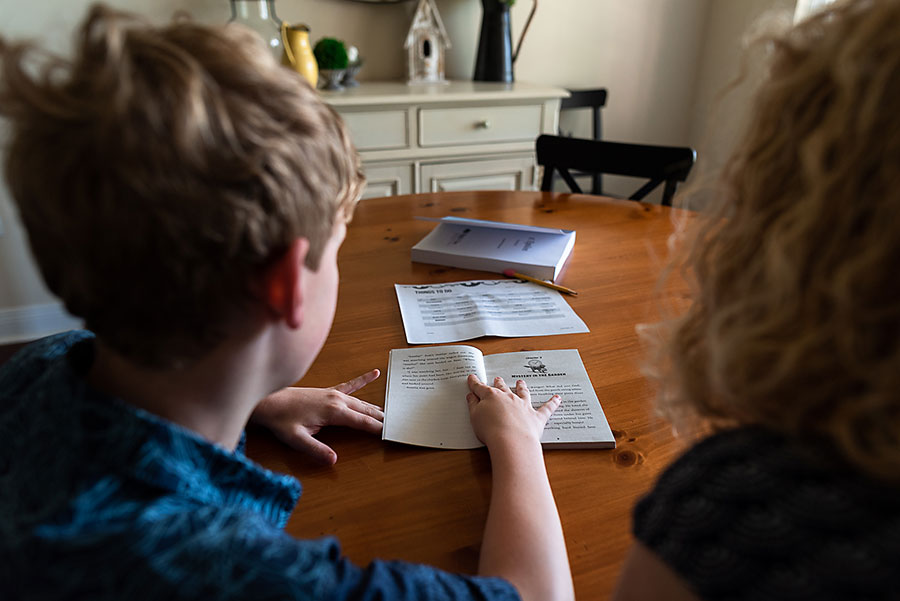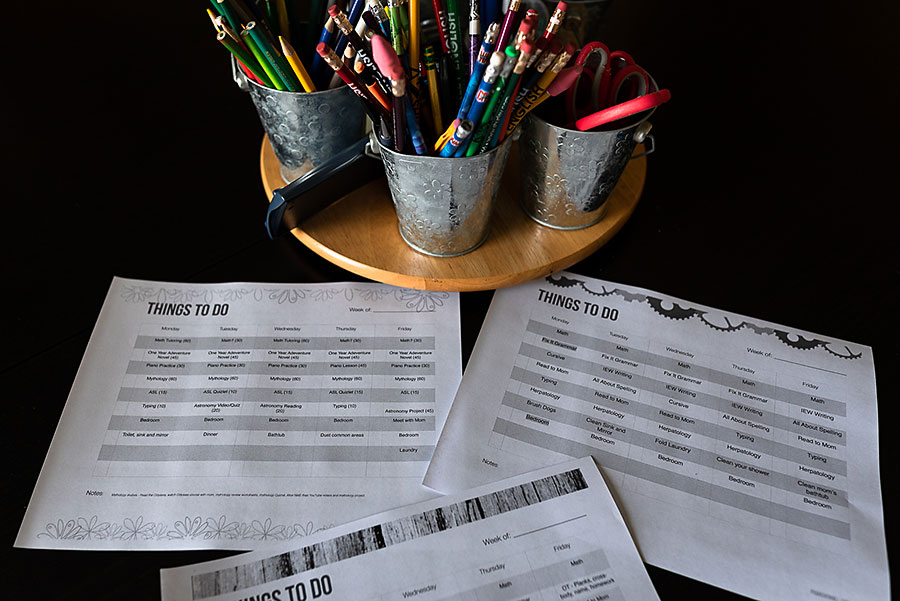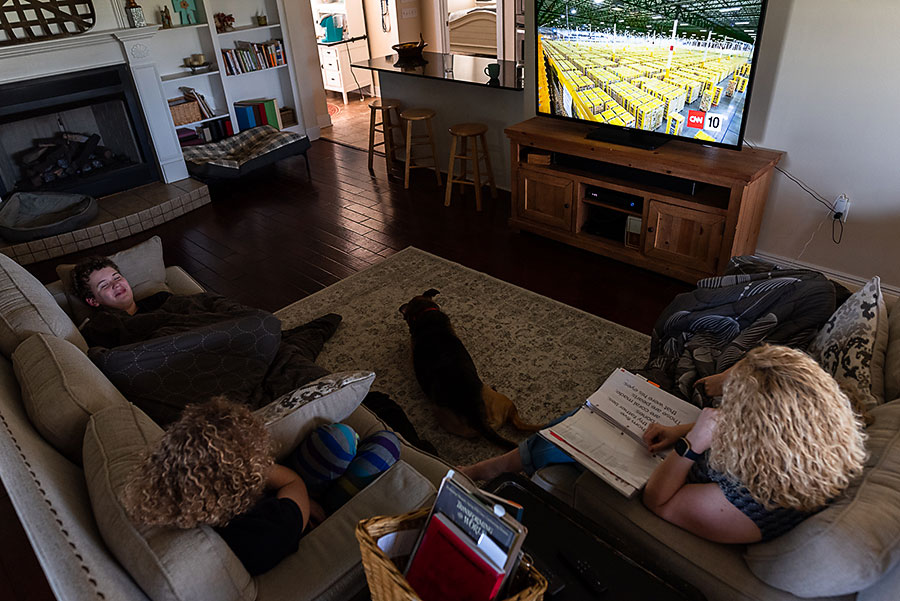
We were pretty sure we were going to homeschool from the time my daughter was about a year old.
So I had all of this time to think about what homeschooling was going to be like in our homes and to research it.
With all that time, I built up this vision in my head of this idyllic version of homeschooling, where we would cuddle on the couch in front of the fireplace and sip hot chocolate and read all of these great books and everybody would love learning.
This was my vision. This was my plan.
And then I actually started homeschooling.
The Different Ways We Imagine Homeschooling
I had that idyllic vision of homeschooling — cuddling on the couch, sipping hot chocolate, going on nature walks, reading great books and having kids who only ever wanted to do the same.
My kids would never complain about their lessons, never complain about learning to read or write.
That was the vision that I had built up in my head.
I felt like if I just gave my kids a really good learning experience then they would actually love learning.
Listen to the Podcast:
One of the reasons we started homeschooling was because I did not want to waste my kids’ time. I felt like a lot of school was a waste of my time. I just wanted to get back to reading my book.
Then my kids came along, and they were not like me at all. Learning was difficult for a few of them, and they really just had their own agendas. They wanted to play all the time.
Having been a former school teacher, I had this idea of what school should look like. I thought I would have these kids who loved doing anything that I put in front of them and learning was going to be easy for them.
That’s really not how it ended up.
What started happening was that we started just checking the boxes. We started having no fun.
I started feeling pressure as a homeschooling mom to make sure that my six-year-old could read.
My kid started pushing back against me and not really wanting to do school and not really enjoying it.
The Power Of A Homeschool Elevator Pitch/Mission Statement
That all changed when my husband was deployed.
I was at home with a seven-year-old, a five-year-old and a two and a half year old. I had never felt comfortable in my homeschool skin. I wondered how in the world was I going to survive that next year?
So in this big survival mode effort, I started planning out my homeschool from an entirely different perspective.
I put to good use all of the years of educational research, of reading about homeschooling, and studying homeschooling methods.
I started crafting for myself, a vision statement or a mission statement to use in my homeschool.
A vision is not what you want your child to look like in 20 years, because honestly you don’t have a lot of control over that when it comes right down to it.
Instead of vision statement is a statement of intent about the atmosphere of your home.
What are the things that your family values about education and learning? What are the things that are important to you?
When you start thinking about this process, talk to your husband about it. Pray about it.
In my book, Plan Your Year, I teach you a number of different ways to make a homeschool vision statement.
My vision is very simply a series of statements that I’ve written out. Here are a couple of examples:
In our homeschool, we refuse to let artificial timelines dictate our school program. It’s okay for everyone to work consistently at their own pace. We refuse to acknowledge the false concept of gaps. And the idea that learning is complete by age 18 — these ideas just create stress and limits on learning.
In our homeschool, we work hard to mastery. Some subjects need to be learned well, and we will consistently practice skills such as reading, writing, and mathematics, even if working on those skill muscles are not our favorite tasks.
I pull this vision out every single year. When I start to plan and think about what are the things that we’re going to do for this year.
I also pull this vision out before I make any large purchases in my homeschool.
I also try to look at my vision about three to four times a year at the very least to make sure we are staying on track with what is important in our homeschool.
Watch on YouTube:
Morning Time Helps Put Your Homeschool Goals Into Practice
Writing the vision was the first step. Next I started adding something to my day called Morning Time.
Morning Time is a time in your homeschool day when your entire family can come together and live and learn together. This has been a huge, huge blessing to us.
This was a balance between just checking off boxes and never getting to any of the really great, fun, interesting learning.
We separated our day into that skill-based time, where we needed to do some of the hard things like math and writing, but we also found time in the day to put the wonderful, lovely things that were just so important to us. That time was a Morning Basket.
The Most Important Part Of Your Vision For Your Homeschool
That is how that big vision became a doable plan — by separating our day into the two parts — the morning basket part and then the independent work part where the kids were working on their skills.
If you are seeking the middle ground between an idyllic vision of homeschooling and school at home which is just no fun for anyone, think about that middle ground by creating yourself a homeschool vision and focus about what’s important to you in education.
Consider starting a practice like a Morning Time to bring more truth, goodness, and beauty to your homeschool day.
Resources from the Podcast
- Plan Your Year: Homeschool Planning for Purpose and Peace
- What is a Morning Basket?
- FREE Homeschool Vision and Goals Workshop
Plan Your Year: Homeschool Planning for Purpose and Peace
- How to Transform Math Lessons without Changing your Curriculum with Denise Gaskins - April 26, 2024
- Homeschooling Boys with Durenda Wilson - April 12, 2024
- What About Lab Sciences? with Dr. Moon - March 29, 2024


